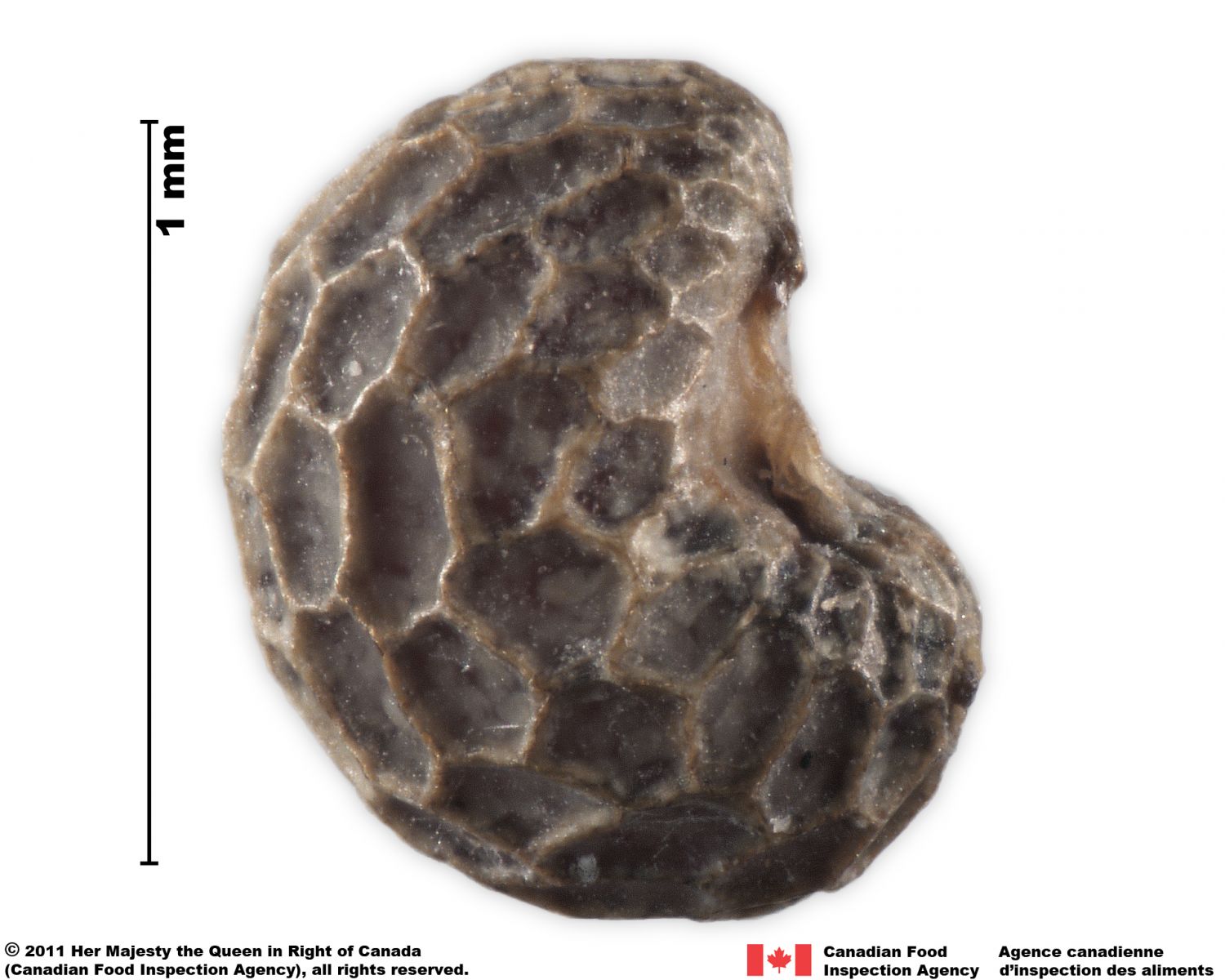Common Colour Description
The morphological features used in seed and fruit identification tend to be stable and conserved within a species, including the colour and colour pattern. The colour is usually left to personal interpretation when a single user is describing seed or fruit specimens, but a standardized description will effectively communicate the features to a wider audience when specimens are unavailable.
A common issue when standardizing colours and colour patterns is that perceived colour will vary due to variation between seeds, fruits, types of lighting, image quality, print material and computer monitor displays. The following information is provided as a guideline, to work towards standardizing descriptions to improve understanding and communication of seed and fruit colour features.
Basic Colours:
The basic colours commonly used in seed and fruit descriptions are:

Colour Gradients:
Within these basic colours, variation from light to dark is commonly recognized

Colour Combinations:
Basic colours may blend together into a colour combination. When naming the combination, the dominant colour occurs second, with the modifying colour placed in front as an adjective, often marked by the suffix -ish, e.g. greyish brown or reddish black. We recommend avoiding specific terms that refer to a given shade, e.g. burgundy or olive green, as understanding of these shades may vary.

Particular Shades: While we recommend the avoidance of names for particular shades, certain shade names are common and widely understood in seed or fruit descriptions, for example straw yellow.

Colour Patterns:
An arrangement of shapes or lines in a different colour than the background of the seed or fruit, with the size described as relative to seed or fruit size.
|
Spotted |
Mottled |
Patchy |
 |
 |
 |
|
Small, distinct, separated circles or points of colour e.g. leafy spurge (Euphorbia esula, Euphorbiaceae) |
Small, irregular patches of colour, may merge into one another e.g. lupine (Lupinus perennis, Fabaceae) |
Large patches of colour arranged in irregular shapes e.g. lima bean (Phaseolus lunatus, Fabaceae) |
|
Striped |
Streaked |
Zigzag |
 |
 |
 |
|
Well-defined long lines that extend the entire length or width of the seed e.g. squarrose knapweed (Centaurea virgata subsp. squarrosa, Asteraceae) |
Short or thick lines with indistinct edges that partially extend down the length or width of the seed, can appear like wood grain e.g. cardoon (Cynara cardunculus, Asteraceae) |
Irregular lines with indistinct edges of colour, can merge into a zig-zag, chevron (v-shaped) or irregular patterns e.g. lanceleaf sage (Salvia reflexa, Lamiaceae) |
Colour Modifiers:
The surface texture may modify or obscure the perceived colour; the effect is dependent on lighting.
|
Dull |
Shiny |
Glossy |
 |
.jpg) |
 |
|
A dull, non-reflective surface e.g. pea (Pisum sativum, Fabaceae) |
A surface that reflects some light, with a satin or silk-like sheen e.g. tall hedge mustard (Sisymbrium loeselii, Brassicaceae) |
A smooth, highly reflective surface e.g. smooth pigweed (Amaranthus hybridus, Amaranthaceae) |
|
Iridescent or Metallic |
Translucent |
Waxy or Glaucous |
 |
 |
 |
|
Surface colours that change depending on the viewing angle e.g. melancholy toadflax (Linaria tristis, Plantaginaceae) |
Surface allows light to pass through the seed e.g. the seed rim of small alyssum (Alyssum alyssoides, Brassicaceae) |
Surface has a waxy coating, giving a pale or light bluish appearance e.g. poppy (Papaver somniferum, Papaveraceae) |
Authored by: |
Images by: |
Reviewed by: |
|
Taran Meyer, Jennifer Neudorf, Angela Salzl and Ruojing Wang Saskatoon Laboratory, Seed Science and Technology Section Canadian Food Inspection Agency |
©2019 Canadian Food Inspection Agency, all right reserved |
Sue Cousins AsureQuality Limited Batchelar Agriculture Centre, New Zealand |
©2019 Canadian Food Inspection Agency, all right reserved


